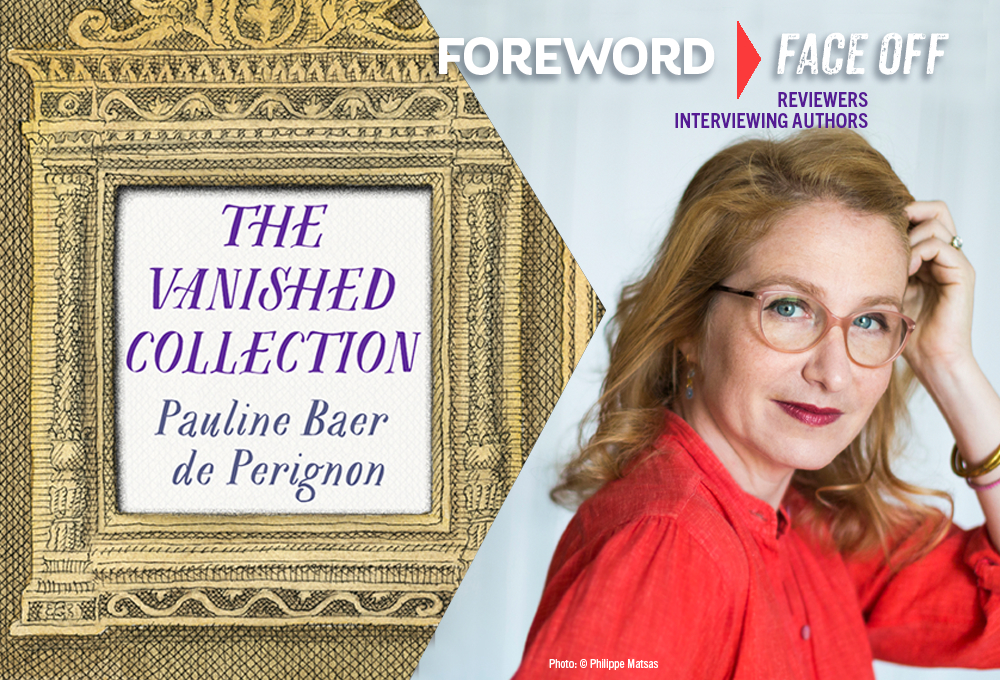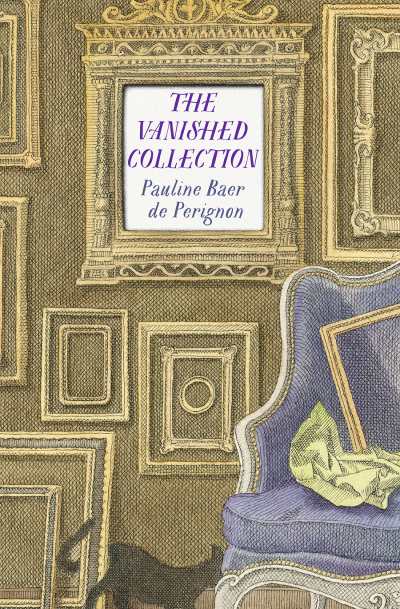It looks like you've stumbled upon a page meant to be read by our code instead of viewed directly. You're probably looking for this page.
Reviewer Michelle Anne Schingler Interviews Pauline Baer De Perignon, Author of The Vanished Collection

As North Americans, not having experienced war on our soil for well over two hundred years—all while buffered by huge ocean expanses and a mac daddy nuclear arsenal—we can’t begin to imagine what our Democracy-loving sisters and brothers in Ukraine are feeling right now with Russian troops massed on their borders. And we also can’t share the terror of European Jews in the late thirties and WWII years, with Nazis on the prowl. But we know it must have been a living nightmare every minute of every day.
Aside from the fact that Hitler’s sadistic minions murdered several million unarmed civilians, they were also greedy thieves of countless works of art, including many works from the great-grandfather of Pauline Baer De Perignon, this week’s esteemed guest and the author of The Vanished Collection, which tells of Pauline’s “years-long pursuit of the truth about her grandfather’s disappeared art and antiques collections––and about her own hushed heritage,” according to Michelle Anne Schingler’s review in Foreword’s January/February issue.

The following conversation is one we couldn’t pass up. Thanks to New Vessel Press for help making the connections.
Until a chance meeting at a concert with your English cousin, Andrew, you were not aware that your family had been subject to spoliation (or: having their possessions stolen by the Nazis). But you did have very keen impressions of your great-grandfather, and of the absences around him that your father perhaps could not address. Beyond what he and his wife and children were subjected to, what is the first thing you’d like people to know about Jules Strauss—how would you like him, and them, remembered?
I’d like that people will remember what his contemporaries referred to as the “Strauss taste” for beautiful things that have a special history regardless of the century in which they were made or their country of origin. Rare objects that were not at all obvious. From the Impressionists to the drawings of Tiepolo, he followed his own taste, with a great curiosity and thirst for knowledge about his artworks. He truly researched art history. He was a discreet man who donated sixty frames to the Louvre and works to different museums that I continue to discover to this day—for example the Musée Carnavalet in Paris—without ever trying to put himself in the forefront. He is for me, the image of an honest man, of the great connoisseur of art who has a very personal eye and taste.
Your family also had not discussed your Jewish heritage much. How has finding that part of yourself impacted you, in large and/or small ways?
I’m very interested in this heritage, even if no one in my family has ever practiced the Jewish religion. What remains of this identity? I don’t know yet. I’m thinking about it. I’ve often heard about Jewish identity that it consists of precisely the fact of questioning oneself about one’s identity, which suits me rather well.
There’s a Supreme Court case right now regarding art stolen by the Nazis (https://thehill.com/regulation/court-battles/590218-supreme-court-grapples-over-fate-of-artwork-stolen-by-nazis); spoliation was also the subject of the film The Woman in Gold. Considered against the other horrors of the Holocaust, why do you think it is that this specific offense continues to capture the public’s imagination (and sense of delayed justice) in such a particular way?
Spoliation is one of the stages of the Shoah. One has the feeling that with this, one can still do something, even if it seems like very little. But one can try to have artworks returned to families who have been subjected to Nazi persecution. People are moved by these stories because I think that paintings tell the history of those through whose hands they have passed. They tell us about the lives of the owners from whom they were plundered. I have heard beautiful and moving stories about families since I became interested in Nazi art theft. It’s essential to transmit them.
Where are Jules’s recovered pieces now, and what has having them returned meant to you?
We had to sell two of them, because there are seventeen heirs. But I was able to keep in my home for some time the portrait of Madame de Parabère by Nicolas de Largillière and I was happy to be able to look at her and benefit from her presence. It’s important that the spoliation of Jules Strauss is recognized, that people don’t forget either the collector or this period of history. It’s a question of justice, but also of memory. For my family, to recover this period about which no one spoke has permitted reconnection with a past that was not only painful but also a heritage that is also important from a human and artistic perspective.
I was struck by the insensitivity of the Louvre guard who mocked you for your family pride; even though the subject of your book itself is a series of grave historical injustices, that moment also enraged me. If you could speak to him now and convey why that taunting was so wrong, would you? What would you say? What do you think reaches such people?
I don’t blame him, I blame more those who never drew a connection between the drawing recovered in Germany after the war and this Monsieur Strauss who had nevertheless been so generous to the museum that seems to have forgotten him.
You write about how you, as a writer, were in search of a subject for years. Having now published this fascinating and moving book: what are you working on next?
I am actively looking for a new book project, but I am not sure what to write about yet. I was so caught up and passionate about this research that I’m having trouble moving on to something else. I’ve thought about asking Jules for advice, if he can hear me.
Michelle Anne Schingler